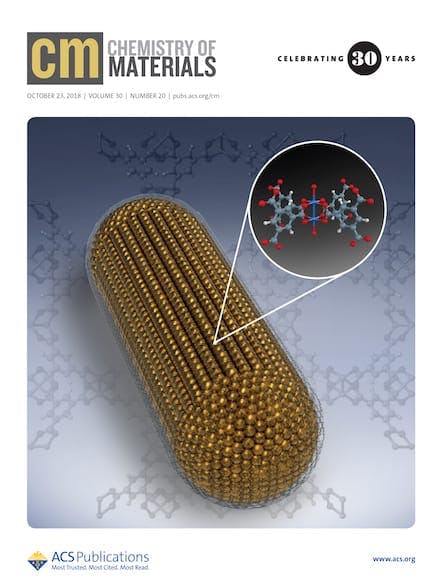Over the past 25 years, Chemistry of Materials has published seminal research in the materials sciences. Materials chemistry is a vibrant and interdisciplinary field, and Chemistry of Materials has helped put innovative research in the spotlight. Since its founding in 1989, papers published in the journal have been cited more than 86,000 times. When Prof. […]

Over the past 25 years, Chemistry of Materials has published seminal research in the materials sciences. Materials chemistry is a vibrant and interdisciplinary field, and Chemistry of Materials has helped put innovative research in the spotlight. Since its founding in 1989, papers published in the journal have been cited more than 86,000 times.
When Prof. Jillian Buriak took over as editor-in-chief of the journal in January 2014, she wanted to find a way to tap in to this rich history—as well as introduce a new generation of researchers to classic papers in the field.
Uncovering the magic behind seminal work
That’s how the “1K Club” was born, a series of editorials featuring papers that have been cited 1,000 times or more. The series began in August 2014, and the articles are published in Chemistry of Materials’ front matter. To quote one editorial, 1K Club features are “an effort to understand what makes these papers special.”
To write these editorials, Chemistry of Materials editors reach out to principal investigators of the journal’s most-cited articles. This has been more complicated than you might think. In many cases, student co-authors have moved on to positions around the world, and some principal investigators have lost track of where their former students ended up.
Editors ask scientists about the inspiration for their research and their reflections on their papers’ impact on the field. They also ask researchers what advice they’d give to young chemists—the results of which have been both humorous and insightful.
Emmanuel Giannelis, at Cornell University, explains that he never imagined the impact his research would have on so many research groups. He’s now considered one of the pioneers of layered silicate nanocomposites. His advice: “Remember that the most important discoveries are accidental.”
Said Charles R. Martin at the University of Florida, “Whatever scientific box you are in now, GET OUT OF IT.”
Looking back and looking ahead
“What’s interesting about the 1K Club papers,” says Managing Editor Carlos Toro, “is that many were early pioneers in areas that are now really hot in materials science.”
For example, Tom Mallouk and Nina Kovtyukhova (and coauthors)’s 1999 paper, “Layer-by-Layer Assembly of Ultrathin Composite Films from Micron-Sized Graphite Oxide Sheets and Polycations,” was among the first to look closely at graphene.
“Back then, no one would have known that graphene would become so popular,” Toro says. “Now, it’s a material that everyone’s talking about.”
Both researchers were mid-career when the paper was published. At the time, Kovtyukhova had just moved to Penn State from the National Academy of Sciences of the Ukraine. The two are still at Penn State today.
Their wisdom for new researchers: “Do not be a pack follower; work on a material that you think is interesting, and do good science with it. It is even better if it is a material that nobody else particularly cares about at the time. Someday, somebody somewhere will figure out why your work was really important.”
At present, 15 Chemistry of Materials articles have more than 1,000 citations—but the number is always climbing. Editors predict that several other papers will cross the threshold in the next few months.
In the meantime, Chemistry of Materials looks forward to putting even more foundational research in the spotlight.
